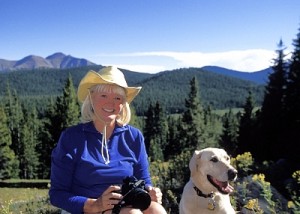Brief by Central Staff
Water – June 2005 – Colorado Central Magazine
The Union Park water project, also known as the Central Colorado Project, might have a new lease on life – it has gained the support of State Sen. Jim Dyer, a Littleton Republican.
The project has been proposed and pushed by Dave Miller, an independent water developer based in Palmer Lake. It has been opposed by everyone from the Gunnison City Council to Gov. Bill Owens.
In brief, Miller would like to build a 1.2-million-acre-foot reservoir at Union Park, a high valley in Gunnison County a few miles southeast of Taylor Park Reservoir.
In conjunction with Taylor Park Reservoir, it would provide pumped-storage peak-demand hydroelectricity. Most of its storage water would be pumped up from Blue Mesa Reservoir, which sits west of Gunnison.
Union Park water, in Miller’s eyes, could be used for “drought insurance” in Colorado’s major drainages. It’s in Gunnison drainage. The Arkansas could be reached with a tunnel under the Sawatch Range, and that tunnel could be part of a siphon that would extend across the Mosquito Range to reach Antero Reservoir on South Platte drainage. In theory anyway, a long canal could convey water to the Closed Basin of Saguache County, where the plumbing is already in place to move water to the Rio Grande.
However, there’s a big question: Is there any water available in the Gunnison Basin?
Miller argues that when the Aspinall Project was built (Blue Mesa, Morrow Point, and Crystal reservoirs), 300,000 acre-feet of storage was set aside for Colorado. Of that, 60,000 was reserved for use in the upper Gunnison Basin, which leaves a theoretical 240,000 acre-feet available each year for “beneficial use,” such as diversion to the Front Range.
But in earlier litigation, the state water court has found that most of this water is already being applied to beneficial uses, such as power generation and allowing Colorado to meet its obligations to downstream states. At most, one ruling said, there is 20,000 acre-feet a year available. And that isn’t enough water to justify the cost of developing it.
Miller, however, says the entire 240,000 acre feet could be available. “What we’re saying is that you don’t need a water right to use the water. You can purchase it from the Bureau of Reclamation.”
The Bureau hasn’t announced any interest in selling the water. But Sen. Dyer says “Colorado needs an emergency high-altitude pumped- storage system, before its invaluable water rights and irrigated farms are permanently lost to thirsty down-river states,” and so Union Park is worth pursuing.
It should be noted that he is looking after his Arapaho County constituents, many of whom rely on wells where the water table has been dropping fast in recent years.

